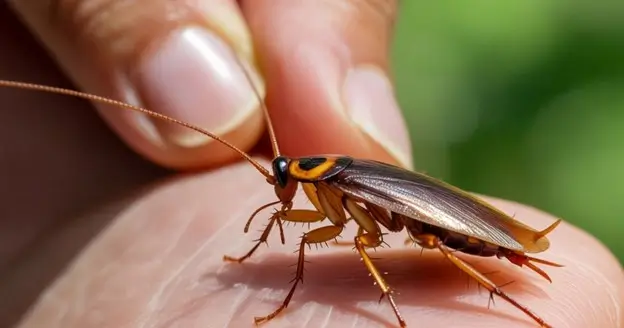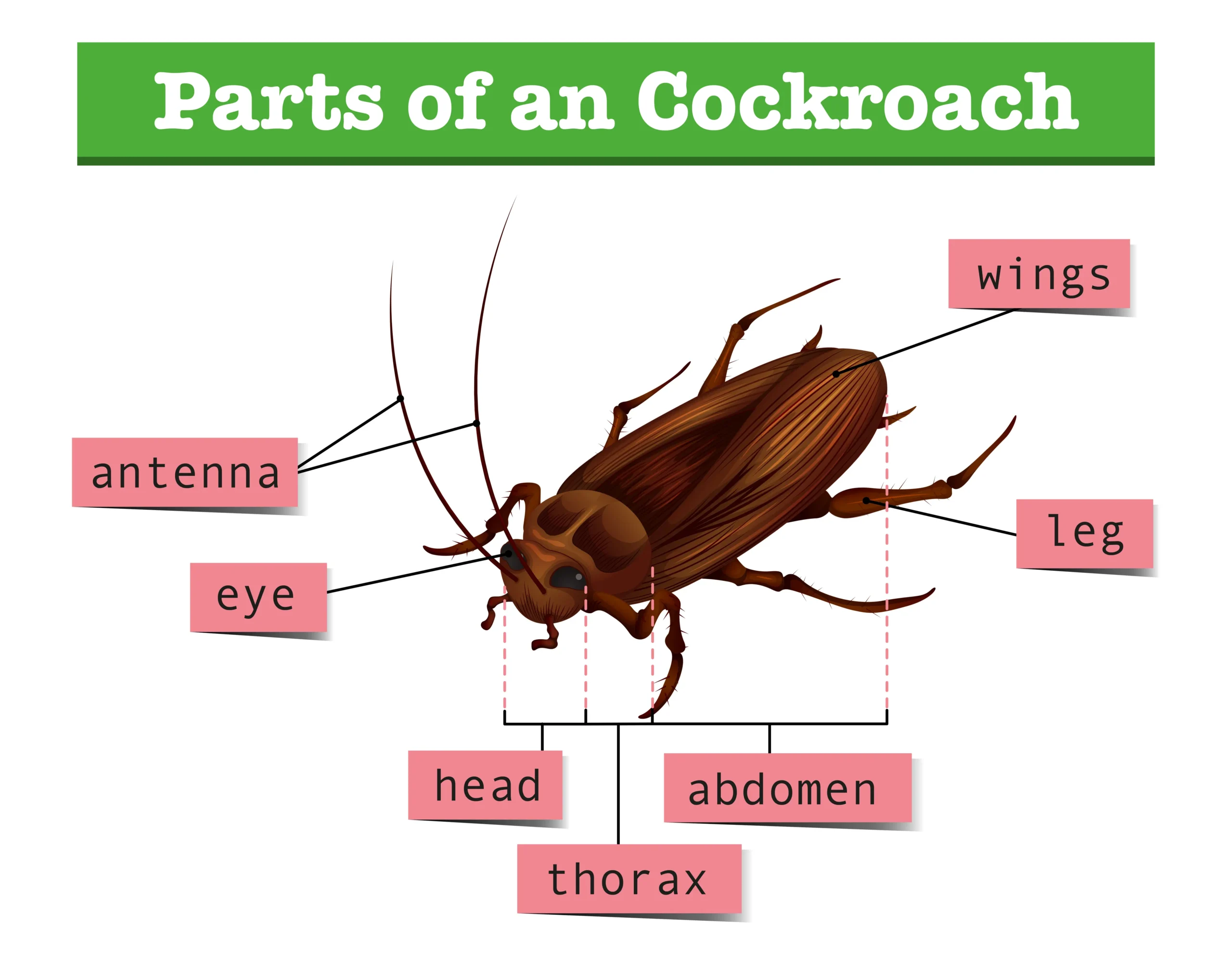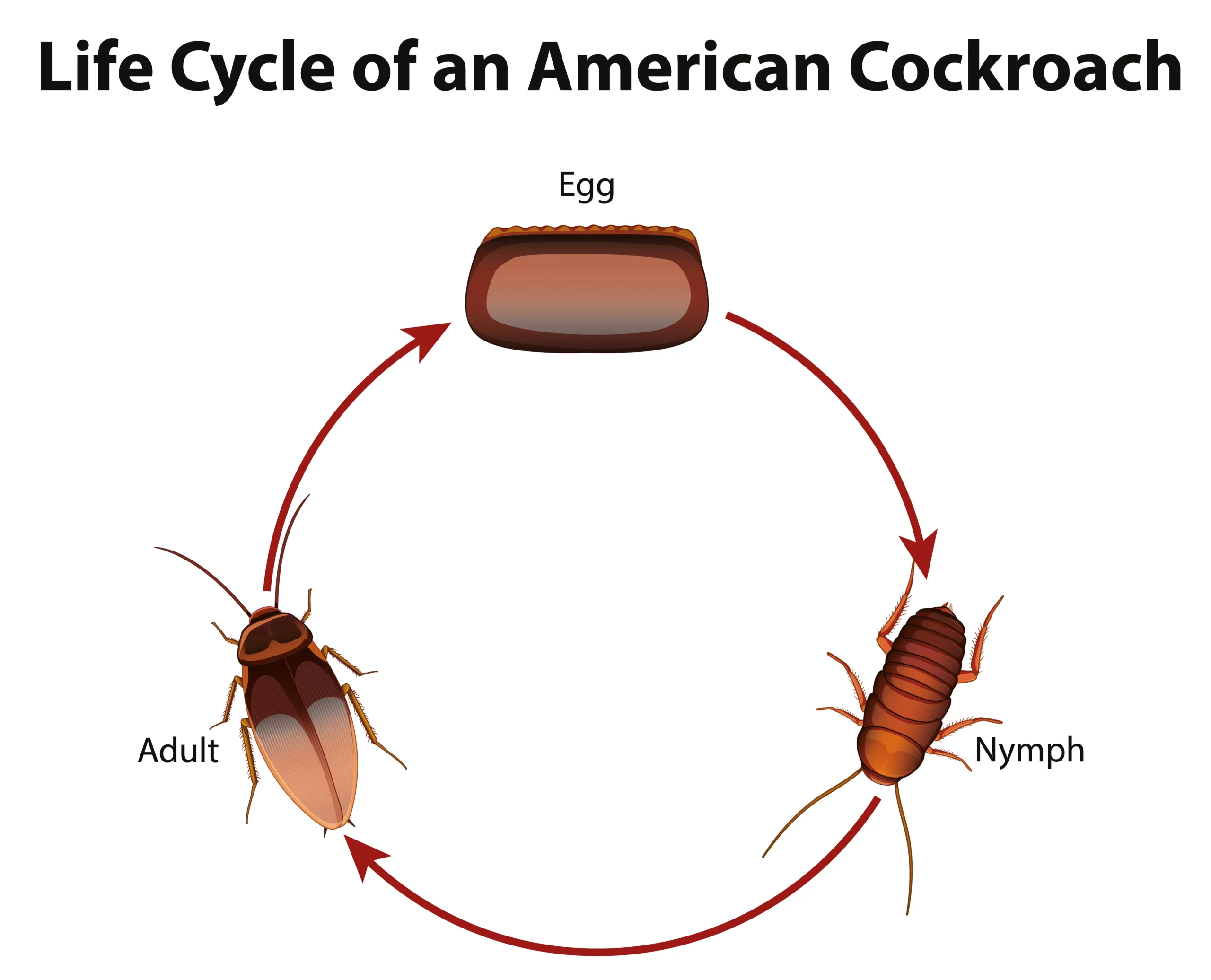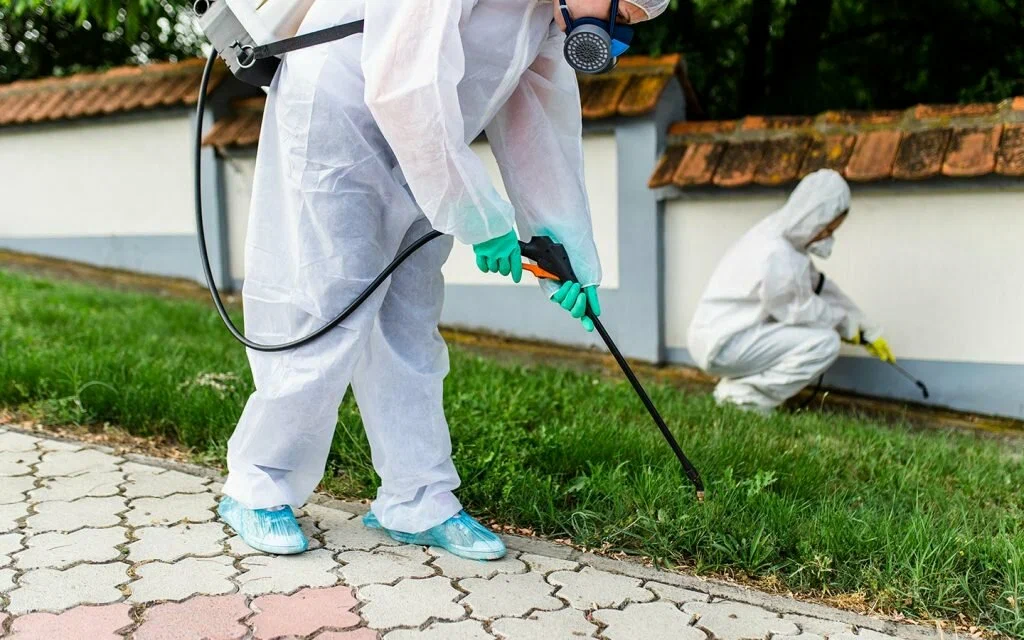Choose the team that has been protecting Hampton Roads residents for over 100 years!
Call Today (757) 583-4444
The Oriental cockroach is one of the most unwelcome pests in homes across the U.S., known for its preference for moist environments and unsanitary conditions. Often referred to as a shiny black cockroach or water bug, this species thrives in dark, damp places like basements, crawl spaces, and sewers. Unlike other types, it’s a wingless cockroach the males have short wings, but they cannot fly, and females lack wings altogether. You can usually identify them by their long cockroach antennae and sluggish movements. Because they feed on decaying organic matter, Oriental cockroaches pose serious health risks, spreading bacteria and allergens wherever they go, especially in kitchens and bathrooms.
Get Your Space Inspected

Blatta orientalis, commonly known as the Oriental cockroach, originated in Europe and later spread worldwide through trade routes and shipping containers. Today, it’s recognized as a global water bug, frequently found in urban sewer systems, moist basements, and aging infrastructure.
Unlike tropical species, this dark brown cockroach thrives in cooler environments and adapts well to temperate and subtropical regions. It often inhabits block walls, drain pipes, and other damp, dark areas commonly targeted by pest control services like Detect Termite.
Oriental cockroaches are darker and shinier than more common flavors like the German roach. Their smooth carapace often looks like a shiny black cockroach and sometimes appears dark brown. They have short wings and don’t fly, unlike their American counterparts.
Their durable body with six spiny legs and long cockroach antennae sets them apart. With distinct physical traits, they’re easy to identify if you know what to look for.

Morphology offers clues. Adult Oriental cockroaches measure around one inch. Their body shines black or dark brown. Females lack full wings and look like a wingless cockroach, while males have short wings that don’t cover their abdomen.
Their lifecycle includes stages of egg to adult. The cockroach lifecycle begins with an egg case (ootheca) that hatches small cockroach nymphs, which molt several times before becoming adult cockroach.
These roaches appear glossy and dark, almost oily. Their body shape is smooth and oval with a slightly flattened form that helps them squeeze into tight spaces. The shine often catches the light in dim environments.
If you spot a hollowed shell, that might be a shed exoskeleton, a sign of molting or growth stage. Their thick shell makes it easy for them to survive rough conditions.
Males bear stubby wings but cannot fly. Females have only wing pads that sit flat on their back. Females tend to roam less, while males might scurry swiftly during the night.
You might notice males climbing walls more often, while females stay close to damp ground. Gender differences influence habitat and how each roach moves.
Females carry an ootheca for several weeks. They release it in damp areas once the eggs near hatching. Roughly six to twelve weeks later, nymphs emerge and mature over several months.
A full cycle from egg to adult can take a year. This slow lifecycle lets infestations build steadily unless intervention occurs quickly.
End the pest problem today!


They prefer wet areas like sewers, crawl spaces, basement drains, and yard mulch. Indoors, you’ll find them in damp laundry rooms, under sinks, near garbage cans. Outdoor locations like compost piles and damp vegetation also attract them.
Because they need moisture, they retreat during dry or hot seasons. Indoors, they hide in floor drains, fungus on walls, or around poorly-lined ducts.
Outdoors, they set up near puddles and standing water, around plumbing leaks, and near decaying leaves. Indoors, they pick sinks, basement corners, behind appliances, and underneath leaking pipes.
They won’t wander into dry kitchens or living rooms unless desperate. Their preference for moisture directs where you’ll find them.
Entry points include cracks in the foundation, gaps under doors, holes around pipes, and damaged weatherstripping. They exploit any narrow passage in damp conditions.
Addressing these points by sealing and reinforcing entryways prevents many visiting roaches from entering.
Food crumbs, garbage buildup, compost areas, and pet droppings all draw them in. They are serious garbage pests that search for leftover scraps near trash cans, bins, or rotting produce.
Grease patches from cooking spills, cardboard boxes collecting moisture, and decaying organic matter also become hotspots. Remove these attracting factors to reduce risk.
End the pest problem today!


They thrive in warm months from spring to early fall, showing up more during warm-weather infestations. Indoors, they remain active year-round if moisture persists inside.
Mostly, they emerge after night falls. You’ll see them late at night or early morning near bathrooms and basements. They largely avoid daylight.
End the pest problem today!
Activity ramps up in spring and summer. That’s when egg hatching increases and nymph survival improves in warm spotty indoor climates.
During cold seasons, they seek warmth under drains or inside structures. They aren’t prone to outdoor winter migration.
You’re most likely to spot them around dusk or dawn. They search for moisture from leaks and food near trash. Kitchen and laundry areas stay at risk even at night.
You might notice a musty smell near their gatherings. Strong musty odor often betrays a hidden roach colony before you actually see them.
Yes. Their travel through waste zones means they carry Salmonella, E. coli, and pathogens to food areas. That makes them more than a nuisance they can contaminate surfaces.
Exposure to their shed skins and droppings may trigger allergies and asthma. Cleaning after them can be unpleasant and risky.
End the pest problem today!


Their cockroach droppings and shed exoskeletons can cause respiratory issues. Droplets left behind produce dust that irritates airways, especially for children.
It can worsen allergies or asthma. Handling dirty drains or cleaning after an infestation demands masks and gloves.
Orientals spread their zoonotic hitchhikers to dishes, kitchen counters, and food. Their travels across waste areas though they’re silent carriers.
Keep food covered and clean surfaces after using pest control. That reduces your risk of bacterial contamination.
Active signs include smears of droppings looking like black pepper, dark smudges on walls, and discarded shells in corners or behind furniture. A musty odor often raises an alarm before physical traces.
Egg capsules attach to hidden areas these are small brown pods. Once discovered, infestation control intensifies.
Cockroach traces include pepper-like droppings, empty egg capsule, shed skins, and dark smear marks in traffic areas. They often appear in basements.
A pungent odor tells you their numbers are growing. Awareness of these signs helps to act early.

One female might produce hundreds of eggs in a year. With a 6 to 12 month lifecycle, populations can double quickly in damp conditions. Nearby dampness and warmth become roach nurseries, compounding infestation risk.
Homes with chronic damp, slow leaks, poorly ventilated basements, or clutter give roaches room and resources. Yard mulches, compost bins, and garden hoses also draw them in. A major reason is unseen leaks. Even slow drips under sinks or behind appliances provide enough moisture for survival.
They thrive in puddles and standing water, overwatered plant soil, and dense cover outdoors. Indoors, they settle in moist hidden spaces and sewer vents. Basements and crawl spaces remain hotspots when humidity is high.
Food residue, grease, and cardboard stacking attract them. Small leaks behind toilets or kitchen pipes feed infestations.
Drying out these areas removes their lifeline and pushes them away from living spaces.

Effective methods include using boric acid below appliances, placing glue traps near drains, and natural deterrents like diatomaceous earth. Regular maintenance and cleanliness work in tandem with chemical measures.
When infestation becomes persistent, professional pest control may be best. Technicians use stronger treatments in hard-to-reach damp areas.
End the pest problem today!
Boric acid powder placed around baseboards works over time. Glue traps near drains catch wandering adults. Clean compost bins and trash regularly to cut attraction.
Natural oils like peppermint sprayed in damp corners may deter females from laying eggs nearby.
When droppings, shed skins, and egg cases appear regularly, professional help is essential. Experts can apply residual sprays, inspect foundations, and seal entry points effectively.
Licensed technicians ensure accurate identification and safe control of infestation.
Keep homes dry and clean at all times. Repair leaks promptly and fix basement dampness. Clear debris near the foundation to reduce outdoor hideouts.
Routine sealing of gaps every season stops migration. Maintenance prevents re-entry even when the population seems gone.
End the pest problem today!

Vacuum corners and clean grease from kitchen floors. Use a dehumidifier in basements. Empty trash often and rinse recyclables before storage.
A dry and tidy home is the strongest defense against returning pests.
Caulk around pipes, patch cracks in cement, and replace torn weatherstripping. Install door sweeps and screen vents to block entry.
Check these seals regularly, especially before spring when activity rises.
Persistence is vital. Regular cleaning first catches early signs like droppings or a stray nymph. Address moisture and seal entry points to prevent a full revival. For stubborn infestations or larger colonies, seeking professional evaluation ensures safer, cleaner homes and lasting relief. Trust Detect Termite to provide expert care and dependable results.
Preventing roaches is a long game. Be consistent with clean habits and regular sealing of homes. Stay vigilant during warm months when activity peaks. Treat prevention as routine, not an occasional effort.
When DIY fails, turn to licensed professionals at Detect Termite who offer safe and targeted pest control. Their training helps eliminate hidden nests in sewers or crawl spaces. Expert inspections and treatments from Detect Termite protect your household and peace of mind.
The best method combines sanitation, sealing entry points, and professional pest treatments targeting hidden nests.
Keep areas clean and dry, fix plumbing leaks, seal cracks, and remove food scraps and standing water.
A mix of boric acid, insect growth regulators, and gel baits works best, especially when applied by professionals.
At Detect Termite, we use proven Integrated Pest Management (IPM) techniques that target cockroaches at every stage offering safe, thorough, and long-lasting protection for your home.
Eliminate moisture, deny access to food, seal hiding spots, and schedule routine treatments with professional pest experts.
Detect Termite and Services proudly serves Hampton Roads and beyond. Whether you need termite inspections, pest control, or moisture repairs, our team is here to help you protect your home or business.
9605 Granby Street Norfolk, VA 23503
Primary: (757) 583-4444
After Hours: (757) 285-5788
admin@detecttermite.com
Monday – Friday: 09:00 AM – 5:00 PM
Available Monday through Sunday, with weekend scheduling flexibility based on staff availability.
Detect Termite & Moisture Services is a veteran-owned company dedicated to delivering safe and effective pest control solutions in Norfolk and Hampton Roads. We prioritize customer satisfaction and eco-friendly practices.
Copyright © 2023 Detect Termite & Moisture Services, all rights reserved.